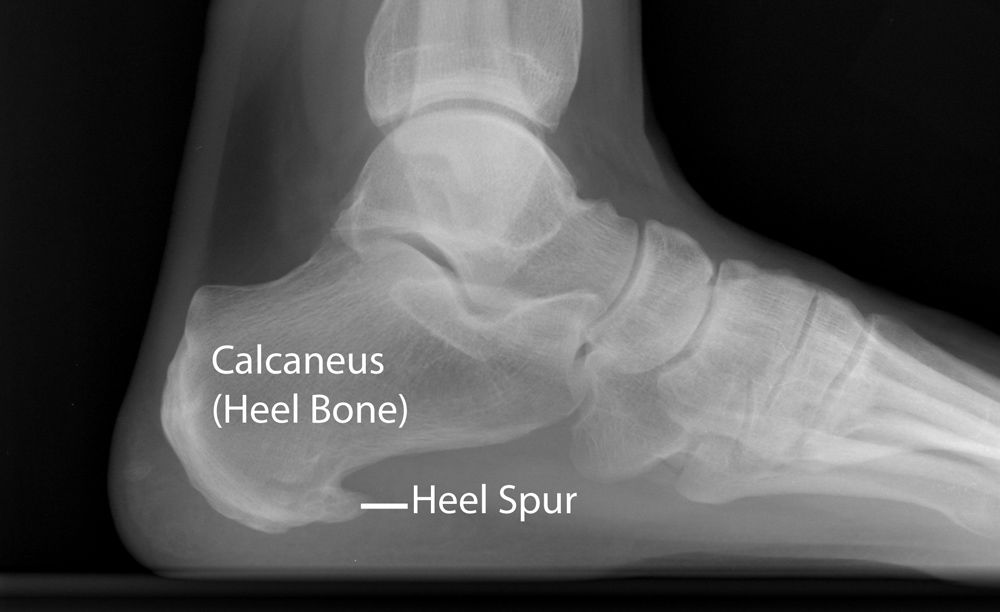Foot Pain & Heel Spur: Common Causes, Symptoms & Treatment Options. Do You Have A Question? Speak To A Therapist Today. Call (24/7): 1300-003-777.
Are you suffering from foot and heel pain? You may be experiencing pain that is associated with a heel spur. Heel spurs are also commonly referred to as foot spur, calcaneal spur or a bone spur. Heel spurs are a bony growth on the calcaneus (heel bone) which may protrude into the arch of the foot towards the plantar fascia. Your plantar fascia is a thick fibrous band of soft tissue which extends between the calcaneus and toes and acts to absorb stress that is placed upon the foot during activity. When your plantar fascia is damaged your body automatically attempts to heal it. During this process there is an increase in fibroblast and osteoblast activity. This activity may lead to the development of bony spurs on the heel resulting in a heel spur. Other causes may be foot joint degeneration.
Signs & Symptoms Of Heel Spurs
If you’ve never experienced a heel spur then you may be wondering what the hallmark signs & symptoms of injury are:
- Commonly no symptoms are present until heel spur formation has occurred.
- Pain may be noted upon waking or during prolonged periods of walking, running, jumping and landing activities.
- Tenderness is noted when the heel is palpated.
Calcaneal Spur Risk Factors
- Activities and sports place excessive stress and strain upon the foot and heel complex.
- Being overweight means that your body must carrying additional kilograms that can irritate the foot and heel and contribute to the development of heel spurs.
- Pregnancy is a fantastic time in a woman’s life but it’s common to experience swelling, weight gain and changes in your gait pattern due to changes in your centre of gravity.
- Occupational jobs that require you to spend excessive periods of time on your feet or individuals who work on hard surfaces are prone to suffering from heel spurs.
- Foot abnormalities or changes in foot alignment, arch height and more may contribute to changes in the plantar fascia.
- Incorrect footwear that doesn’t provide adequate arch for foot support.
How Are Foot Bone Spurs Diagnosed?
Heel spurs and plantar fasciitis usually co-exist. Your treating therapist will perform a comprehensive examination of your feet in order to determine your exact problem. To commence your examination you’ll be asked various questions which will guide your practitioner. These questions may include:
- How long have you been experiencing this pain?
- Do you notice the presence of tingling or numbness?
- Can you identify any activities which particularly aggravate the problem?
- Can you identify any activities which reduce the problem?
- Have your experienced heel spur pain before? If so, what treatment was administered and was it helpful?
Following this discussion:
- Your practitioner will palpate your feet and observe for any tenderness or skin changes
- Perform a variety of orthopaedic and neurological tests if required
- Arrive at an accurate diagnosis and prescribe a specific management plan to assist your recovery
Heel Spur Treatment
There are numerous phases of treatment which may include:
- Early injury protection, pain relief and anti-inflammatory strategies
- Reduce foot tissue tightness and spasm through soft tissue therapy and associated modalities
- Improve foot and ankle biomechanics
- Analysis of footwear and gait pattern
- Return to normal sport and activities
Additional Information
If you wish to continue your reading about Heel spurs please click here.
Chiropractor Heel Spur Research
- While sample size constraints were noted by the author, conservative management including Chiropractic foot and ankle manipulation, stretching and orthotics resulted in clinically significant improvements in heel pain. Dimou, E. (2004). A randomized, controlled trial (with blinded observer) of Chiropractic manipulation and Achilles stretching vs. Orthotics for the treatment of plantar fasciitis. Journal of the American Chiropractic Association, 41(9); 32 – 42.
- Low energy Shockwave treatment appears to form an effective part of conservative Chiropractic management for disorders involving the foot, ankle & heel. This may in turn prevent individuals requiring surgery for heel spurs and associated foot abnormalities. Rompe, J. (2002). Evaluation of low energy extracorporeal shockwave application for the treatment of chronic plantar fasciitis. The Journal of Bone & Joint Surgery, 84(3); 335 – 341.

